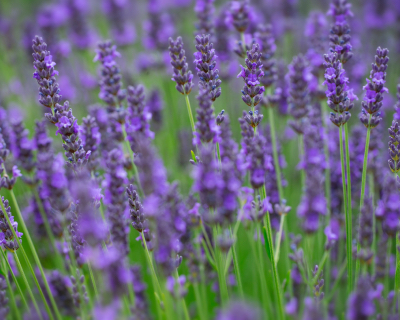RHS Wisley’s inspiring ways with lavender
RHS Garden Wisley has an enviable collection of lavenders. Our garden team share their advice on how to get the most from these much-loved fragrant summer plants
Thousands more lavender plants have been added to the Viewing Mount at RHS Garden Wisley. Planted in alternating stripes, two lavender cultivars in contrasting colours spiral around the mount, creating a fragrant carpet that delights both visitors and pollinators in the summer months.
These hybrid lavenders were chosen for their tall flowers and high oil yield, which give them a strong aroma. Situated near RHS Wisley’s beehives, the ribbons of lavender are abuzz with bees and other pollinating insects.


